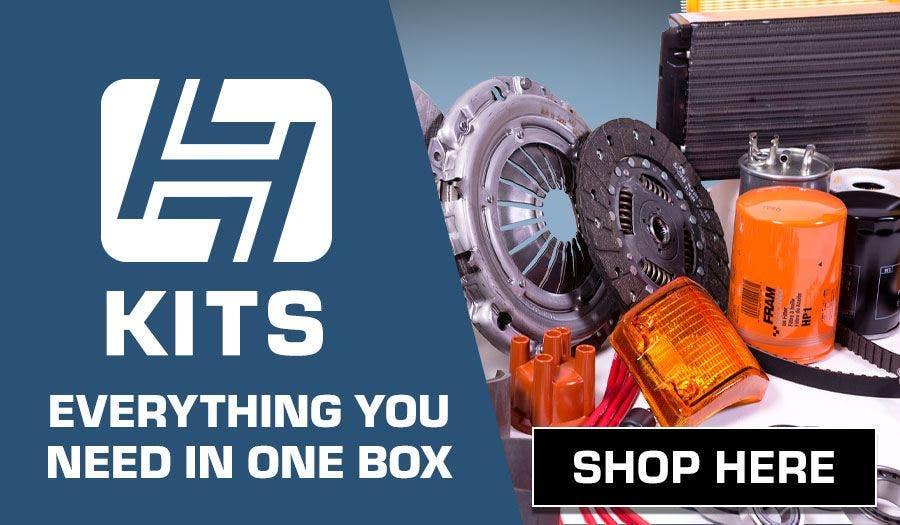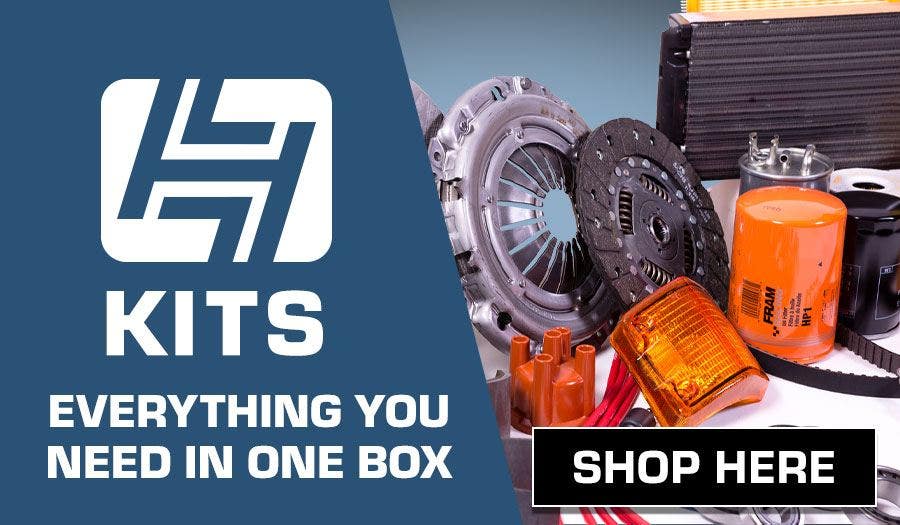VW T25/T3 Buying Guide
As Splitty values go stratospheric and Bays continue their upward spiral, inevitably there’s been a knock-on effect on its successor the Type 25. But that doesn’t mean you can’t still buy one of these iconic ‘breeze blocks’ for not too much money – and the brilliant thing is they are generally more practical and you can still buy virtually all the parts. Here’s all you need to know in our VW T25 Buying Guide.

Often called the T3
As a spiritual successor to the Bay, the Type 25 Bus (often called T3) marked quite a departure visually, being wider and longer with a bigger glass area and considerably more boxy. While the tried and tested torsion bars at the front were replaced with double wishbones, with the rear now featuring semi-trailing arms, other VW traditions such as the air-cooled engine and its position in the back lived on – and it’s this thread of continuity that makes the Type 25 so appealing to the stalwarts. Even the early two-tone colour schemes mimicked those of the Bay, albeit it more garish yellows, greens and reds… Sadly, another thing the Type 25 inherited from its predecessor however was its ability to rust – and those panel seams provide a constant source of anxiety for owners, as do some of the later water-cooled engines. More on that later, but before we get on to what to look for when buying it’s worth going on a whistle-stop tour of some of the Type 25 milestones to enable you to pick a van from the right era…



Early Aircooled Models
The first ones from 1980 were available with either a 1.6 (50bhp) or 2.0-litre (70bhp) air cooled engine and you can instantly identify these by the absence of a second grille just above the front bumper. The 50bhp 1.6 diesel unit from the Golf was fitted from early 1981 and by the end of that year there was a switch to water – with a 60bhp and 78bhp versions being offered. Air-cooled units ceased the following year. New engines from 1985 included a 70bhp turbodiesel and a 2.1-litre fuel-injected petrol unit which produced either 95 or 112bhp. At this time a four-wheel drive Syncro model, made by Steyr/Daimler/Puch with the 78bhp engine also breaks cover for the first time. An upmarket ‘Cavavelle Carat’ hits the market in September 1985 with rectangular headlamps, body spoiler, swivel chairs, cold box and other goodies inside. The Westfalia ‘Joker’ camper is renamed the ‘California’ in 1988 before the last T3 (the 3 bit indicating the use of rectangular, not round headlamps) left the Hannover factory in September 1990. The very last T3, however, was the Syncro – the last one of which left the Graz factory in Austrian in 1992. Body offerings throughout production included a pickup, double cab pickup, Transporter, hi top delivery van, Kombi with windows, Kombi hi-top, Caravelle with minibus interior, Multivan and Syncro – but not all were available here in the UK.

Type 25 Bodywork
The condition of a bus’s body should be the major deciding factor when buying because sorting rust isn’t particularly easy or cheap. The Type 25’s seams are particularly prone to rust – the flexible sealant applied at the factory dries and cracks with age and begins to hold water which then rots the surrounding metal. Repairs are tricky, and you often see vans being sold where the gap’s missing altogether where it’s been welded!


Gutters, window surrounds, front wheel arches (a notorious mud trap) and cab step also rust. Rear wheel arches can also rot out, and being double seamed they’re a swine to repair properly. We supply everything from a simple arch repair section to a complete arch panel, as well as arch liners. Another difficult to repair rust spot is the flat section of metal above the bumper – water sits on top of the seam between two sections of panel and rust is inevitable unless it’s been treated with waxoyled.








Check Everywhere!
Don’t forget to eyeball the bottom of the sliding door, and also watch for worn door runner bearings which will make operation less than smooth. The top of the fuel tank has a big dent in it by design allowing water to sit and this can also rust badly, so climb underneath and inspect carefully. We sell replacement Type 25 fuel tanks, so it’s no biggie although fitting all the pipework can be a fiddle on later models.


Engines
None of the engines were brilliant, the early air-cooled ones and the non-turbo diesels being very slow and later water-cooled units suffering all manner of problems. The early 50bhp air-cooled units were derived from the Beetle engine but with hydraulic tappets, conventional oil filter and a cooling fan on the end of the crank. Here it’s a case of looking for cracked cylinder heads and overheating due to stuck thermostats. Despite being quite thirsty, the 2.0-litre 70bhp CU engine was the better of the two air-cooled offerings and was based on the Type 4 unit as well as the later Bay. Its twin Solex carburettors are troublesome and prone to air leaks, making replacement the best remedy. Oil leaks from the pushrod tubes is common, but relatively easy to sort while rusty heat exchangers should be viewed with caution because they are pricey to replace. Otherwise it’s simply a case of looking out for blue smoke on the overrun which points to worn valve guides, or nasty knocks from the crank bearings. It’s not as easy to check for end float because there’s a mesh guard over the fan.

The Waterboxer Engine
As for the ‘wasserboxers’, unfortunately, they suffered a bit of design fault in respect of the fact that the cylinder head bolts pass through a water jacket and can corrode if the anti-freeze (containing rust inhibitors) hasn’t been changed regularly. Some owners swear by the use of pink phosphorous free antifreeze (G12), but basically it’s a case of ensuring it’s been changed every two years, otherwise you may encounter problems with the rubber head gasket. If the bolts go and the gasket starts leaking coolant, then a replacement engine is the only option.
The DF 1.9 feels underpowered, making the 78bhp DG waterboxer engine the much better option – although beware any with leaky exhausts as it’s a complex system and tricky to fit. The fuel injected MV 2.1 from 1985-on was even better and produced a healthy 95bhp and even more if you (legally in the UK) remove the catalytic converter. The pick of the bunch, if you can find one, is the 2.1 carrying the DJ engine code which produces an eye-watering 112bhp. Again, being fuel injected any running problems are likely to be a result of faulty sensors, so make sure it idles nicely and doesn’t cut out when warm.

Buying a Diesel Type 25
As for the diesels, people like them because they suit the nature of the Type 25 and most were derived from the Golf, tilted over to fit the lower engine bay. A word of warning, though, the early 50bhp CS 1.6 is dangerously slow and many diesels will have endured a hard life as it was the obvious choice for commercial use. The 1.7-litre KY engine (57bhp) was slightly better, but parts are scarce, which makes the JX codenamed 70bhp 1.6 the one to go for with performance about on par with the aircooled petrol but with far better economy. However, cylinder heads crack and the turbos can fail, so beware misfires and worryingly sluggish performance.

Running Gear
If the body’s solid and you’ve an engine that’s in rude health, pretty much anything else is a bonus. Regarding the suspension, at the frontcheck for broken anti-roll bar link arms, worn upper wishbone inner bushes and worn upper balljoints. At the rear, its simply a case of inspecting the rear trailing arm to make sure it’s in one piece, not rusted through. Brakes from the Bay were used until mid-’86, so it’s all the usual stuff like corroded bleed nipples, leaky pistons and shot flexible hoses. Later stoppers are stronger but bear in mind the brake disc carries the wheel bearing so if you replace the front discs, you’ll need to buy a wheel bearing kit at the same time. At the rear, automatic adjusters sometimes seize and the adjuster bars wear but there’s easy ways to remedy this.


Creature Comforts
You can check whether the van you’re looking at has got power steering by looking for the reservoir at the back of the engine bay. Electrics shouldn’t be a problem, but make sure the charging system on campers works as it should and that the leisure battery is in good health. Finally, the a four and five-speed manual transmission was available and both will benefit from regular oil changes, so ask if and when this was last done. Otherwise, beware of noisy diff bearings, loss of synchro and oil leaks in the bell housing from the pinion oil seal.



Verdict
The key to bagging the best Type 25 will be to buy on condition and avoid ones with bodged or rusty seams and serious rust. That said, if you’re handy with a welding torch, all the necessary repair panels are available. As for engine choice, well, there’s no one clear winner but the 1.6TD or 2.1 make good choices. The air-cooled buses have a charm of their own, but are slow and pretty thirsty. Remember, if you do opt for a water-cooled petrol model look for tell-tale moisture around the rubber head gasket seal which could be a sign of imminent problems with corroded cylinder head bolts. There’s some important extra stuff to consider regarding campers. Westfalia was the factory option, but UK businesses such as Danbury, Holdsworth and Autosleeper all carried out conversions. With Westies, the Atlantic is a higher spec than the California, but bear in mind the fact that being ‘double glazed’ you can’t open the sliding side windows. An extra ‘buddy’ seat adds value to a bus, and most Westies already have a fitting on the floor. As for whether to go for a fixed hi-top or elevating roof, much is down to personal preference. Lift up roofs always get my vote because there’s still carparks you can’t get into with a hi-top and there’s also the extra drag to consider. Otherwise it’s a case of making sure all the little extras work as they should, such as whether the camping fridge ignites on gas – can you see the pilot light? Also, make sure the cooker and mains hookup works as it should, and that the auxiliary water tank for the sink isn’t leaking. Check all the original decals are in place because this will tell you whether the van’s been sprayed and make sure the indicator lights work on the camping control panel.

Prices
Ah, here’s the tricky bit. Realistically, you’ll be hard pushed to find any kind of project for under a grand, and even the scruffiest looking early air-cooled panel vans with an MoT will make £2,000. Campers from this era start at £2,500, but really nice, original air-cooled Westfalia Jokers may reach up to £8,000. Later watercooled campers usually kick off at between £4,000-£6,000 depending on condition, with reasonably nice ones easily making £8k-£9k. The very best Westfalia Californias with replacement 1.6TD or 2.1 petrol engines being sold with a warranty with rectangular headlamps and no rust might be as much as £12,000. Indeed, the most we’ve seen so far for a T3 is a 1990 Vanagon which was selling for £15,500. So if you want a Type 25/T3 you’d better move fast before they all start fetching this kind of money.

Ian
Thanks to Sam for offering your van for this feature!




 Beetle
Beetle
 T2 Bay
T2 Bay
 T2 Split
T2 Split
 T25
T25
 Transporter T4
Transporter T4
 Transporter T5
Transporter T5
 Golf Mk1
Golf Mk1
 Golf Mk2
Golf Mk2


 911
911
 996
996
 997
997
 986 Boxster
986 Boxster
 987 Boxster
987 Boxster
 912
912
 944
944
 924
924


 Defender
Defender
 Discovery Series 1
Discovery Series 1
 Discovery 2
Discovery 2
 Series 1, 2 & 3
Series 1, 2 & 3
 Freelander
Freelander
 Freelander 2
Freelander 2




